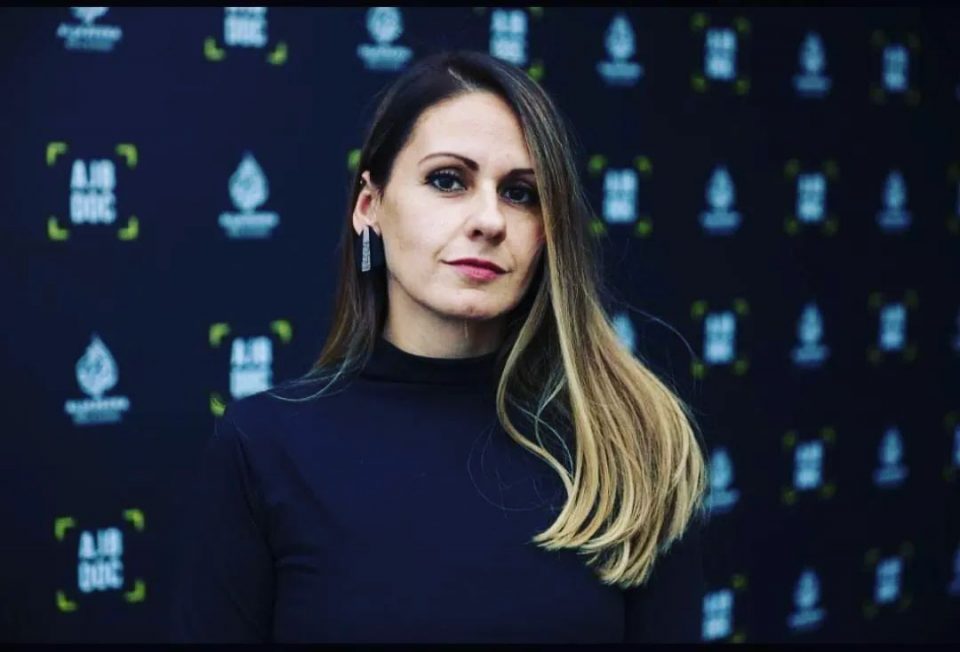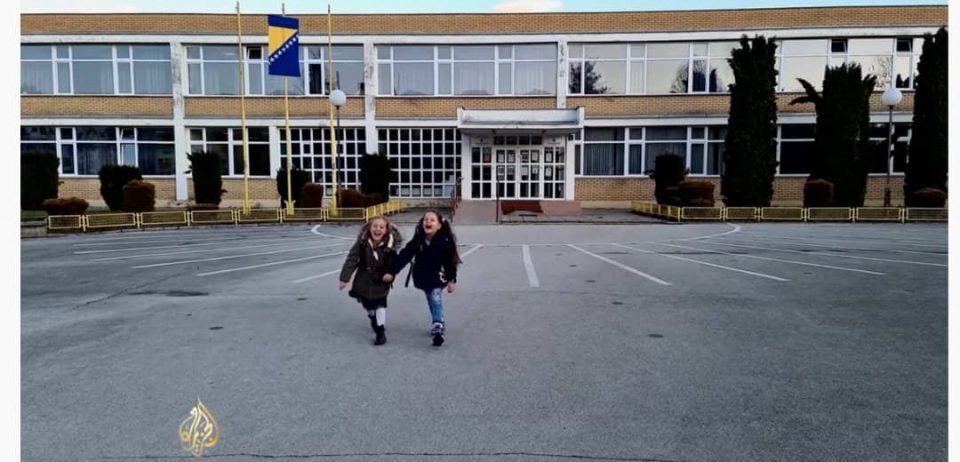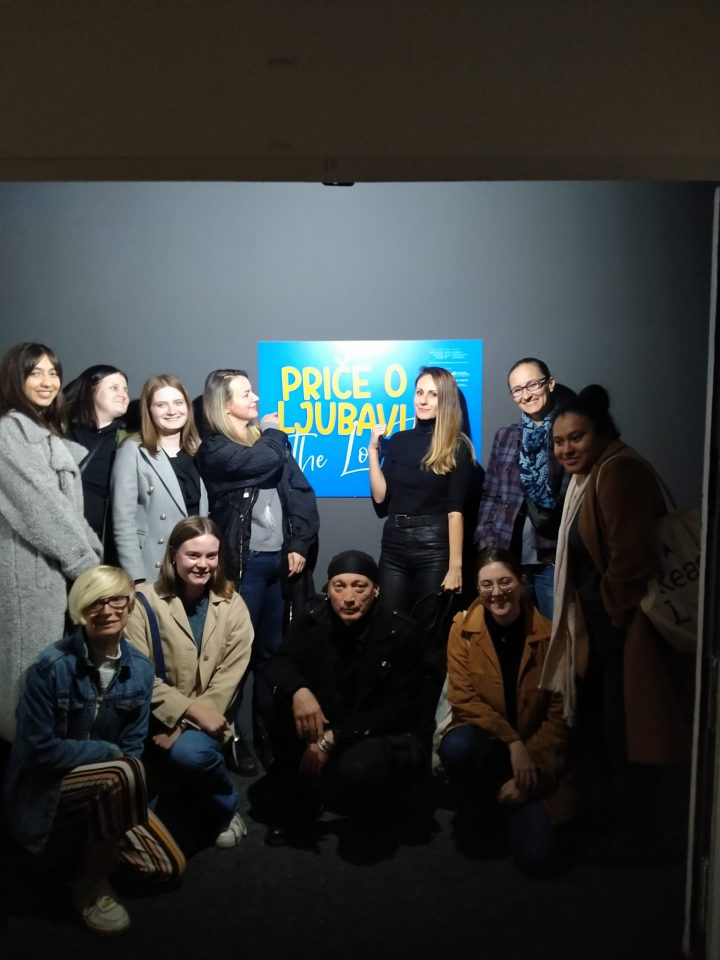
Aida Gavrić’s debut film “The Colorless” was shown on October 14th as part of the Post-Conflict Research Center’s project and photo exhibition “The Love Tales.” The film is about children from ethnically mixed marriages who, stigmatized as ‘half-breeds,’ are consigned to a liminal space, in between world’s, given the ethno-nationalist character of Bosnian and Herzegovinian society.
The film is about children from ethnically mixed marriages who, stigmatized as ‘half-breeds,’ are consigned to a liminal space, in between world’s, given the ethno-nationalist character of Bosnian and Herzegovinian society.
The film showcases different perspectives on hybrid identities and the position of not belonging, reflecting on the idea that belonging is not essential, and not-belonging is in fact an option.
“The Colorless” follows those born from a time of love between different peoples who, with the collapse of brotherhood and unity, found themselves stuck in an “in between.” In this way, the film focuses on those who defy classification in a country where ethno-nationalist categories color the social landscape. These people are often labeled a kind of excess or “other,” Gavrić said.

She explained that the idea for the film sprung from her scientific fascination and research on hybrid identity and identity in general. The root of this fascination lies in personal experience. As a child, she came to the realization that she cannot be classified according to popular confessional and ethnic categories in a society in which such classifications are not just important, but central to nearly every aspect of life.
Gavrić earned her master’s degree at the Department of Comparative Literature and Librarianship in Sarajevo. She recently defended her doctoral dissertation on cosmopolitanism and world literature in the magazine Nada between 1895 and 1903.
The entire film is embedded with her personal story, as she herself is a child from a mixed marriage. For this reason, she says it’s difficult for her to choose any one scene from the film as the most poignant. However, she ultimately singles out the narrative of two girls, Nora Gutić and Arven Gavrić Memić, whose spirit, reflection, and even visual representation embody the essence of what the film depicts.

“Every aspect is extremely important to me and forms an indispensable part of the puzzle of what my goal was to convey to the audience. But if I really had to choose, I would say that it’s the perspective of the two six-year-old girls, which is the most intelligent,” explains Gavrić.
“I have always wanted to change the world”
It is extremely important to discuss these topics, especially in a society as divided and distrustful as Bosnia and Herzegovina. The easiest way approach to the subject is certainly through art, because in the case of engaging art, silence is not golden.
“I don’t want to be silent. Artists must not remain silent. Otherwise, who else will point out the reality and what is wrong and bizarre in it? Who will uncover it?” Gavrić said. She noted that she has always wanted to change the world and believes that this is the primary drive of most of those who work with art – or at least should be.

Velma Šarić, the president and founder of the Post-Conflict Research Center, has demonstrated the potential of art to change established narratives. Her work is based on the use of innovative multimedia content for the promotion of peace narratives, including documentaries, photography, and art.
“Art has proven to be an excellent medium for promoting true values and topics that are still somewhat taboo in our society. Art is the easiest way to change current entrenched narratives,” said Šarić.
Non-Existent and Unsustainable Relationships
The “Love Tales” exhibition was set up at the History Museum of Bosnia and Herzegovina, which organized the screening of “The Colorless” together with the Post-Conflict Research Center. The exhibition focuses on ten ethnically mixed couples from Bosnia and Herzegovina. Both the exhibition and the film challenge the existing narrative that relations between people of different ethnicities are non-existent and unsustainable.

Gavrić witnessed the power of art, including documentary film, when her film premiered at the AJB DOC Film Festival, in the category of films recorded with a smartphone.
“It’s especially interesting that an audience that is not directly affected by the central theme reacted strongly to the film. People often cried and laughed at the same time watching it. As someone who has spent her whole life writing, that is, a medium that has a very limited reach, this experience is totally extraordinary,” explained Gavrić. She added that this film actually represents a significant turning point in her work – the transition from text to moving picture.
The inspiration for the title “The Colorless” came from the work of Džemaludin Latić, a professor and writer who published a text in 1994 in the wartime magazine Ljiljan and in the collected volume Mješoviti brakovi. In the text, he talked about mixed marriages as “a kind of misunderstanding of common life is present,” as well as “mostly failed marriages in which severe conflicts arise.” He also said that children from these marriages are “frustrated by default,” and thus, the author recommended at the time that “such marriages end once and for all.”
“In the film, he was given the space to explain his current view of the text he wrote almost 30 years ago, and to express his views on the subject today,” Gavrić said. At one point in the film, Professor Latić apologizes for, as he says, “the clumsy and careless expression” he used in the 1994 text.
The author of “The Colorless” believes that we should embrace diversity in identity among people.
“Don’t allow yourself to be divided, diminished, or categorized. The lowest acceptable collective identity determinant for a human being is that of belonging to earth. This is the only way to the Kantian utopia of eternal peace,” Gavrić concluded.






